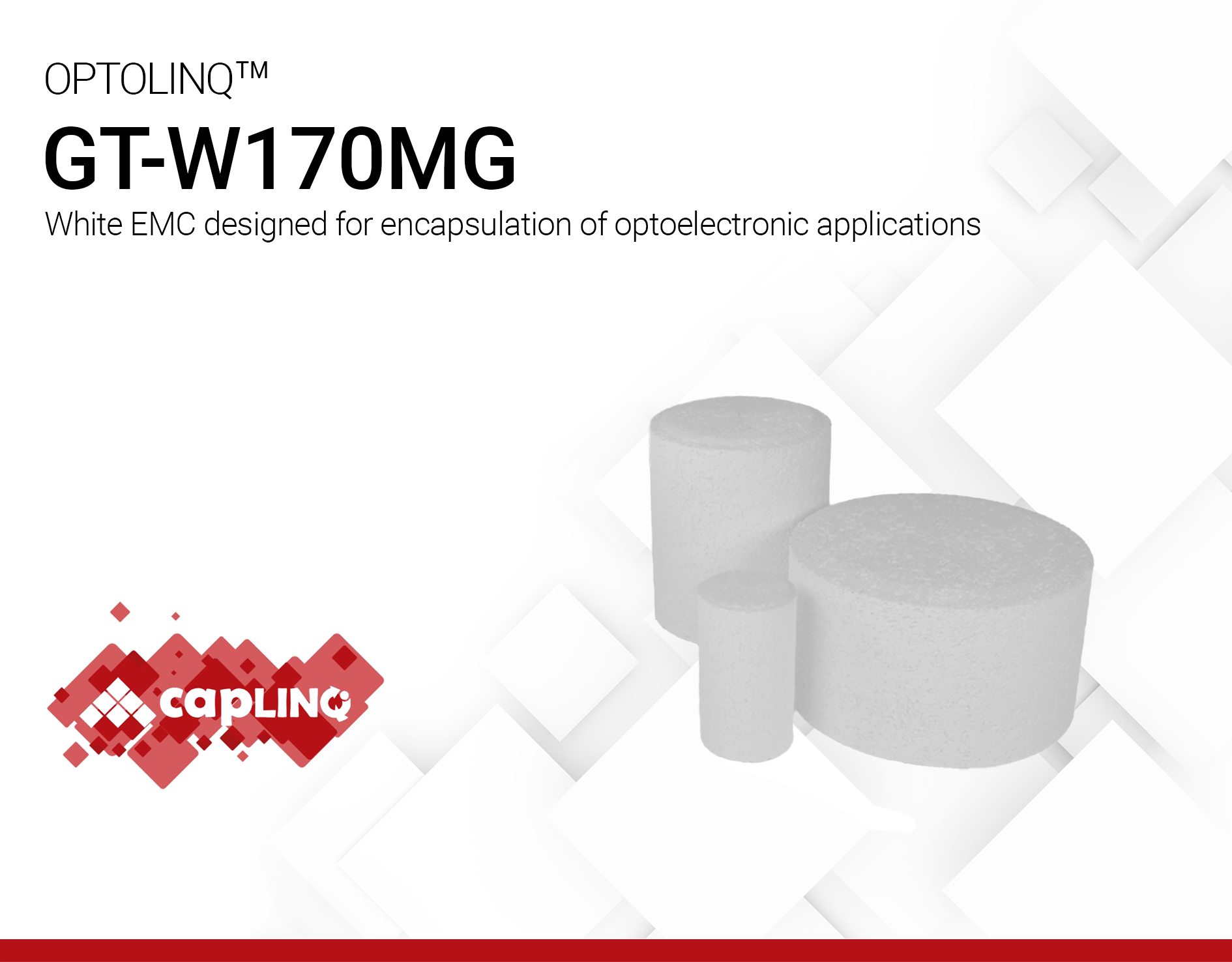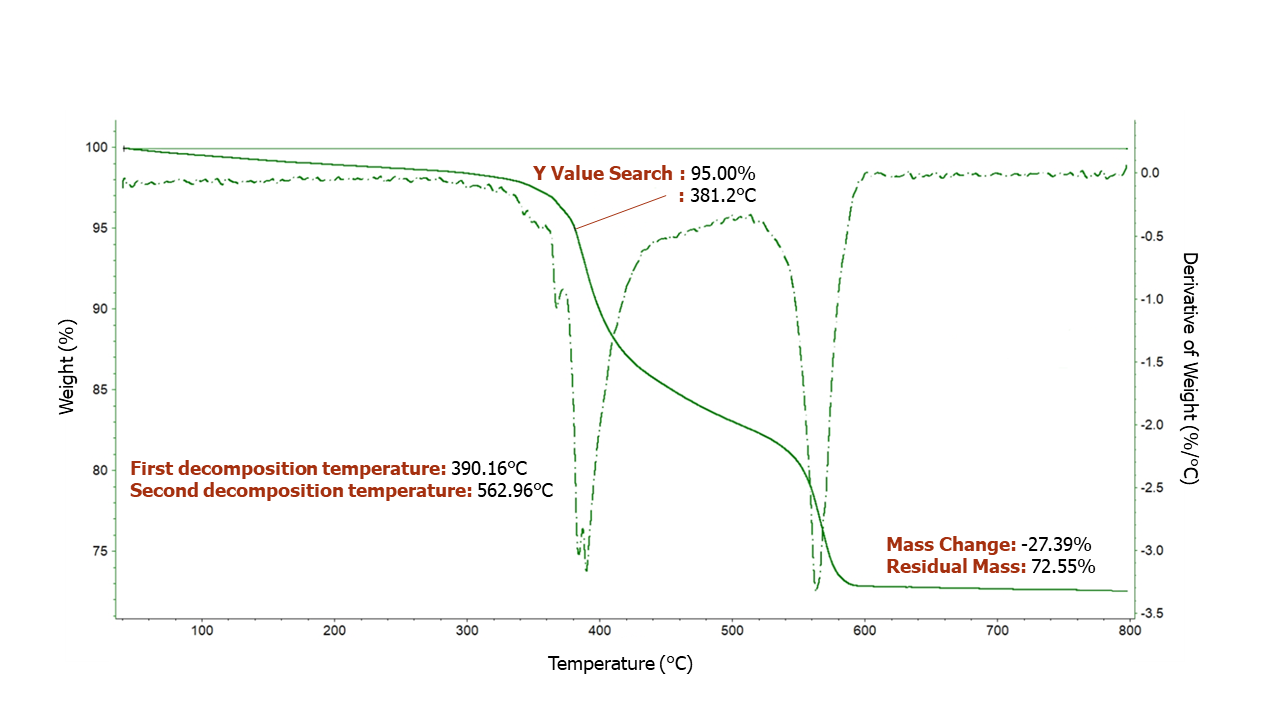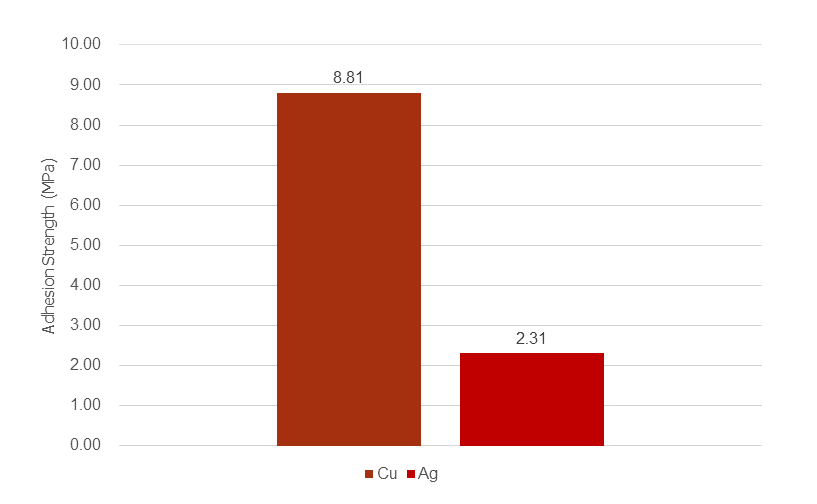OPTOLINQ GT-W170MG | White Epoxy Mold Compound
- High light reflectance and excellent light shielding
- Low yellowing at high temperature
- High MSL performance
Product Description
OPTOLINQ GT-W170MG is a premium white epoxy molding compound designed for the encapsulation of optical and optoelectronic semiconductor devices. It delivers exceptional photoelectric performance through outstanding light reflectance, shielding properties, and high-temperature stability. GT-W170MG is the non-green version of GT-W170.
OPTOLINQ GT-W170MG complies with the stringent safety standards for voltage isolation and flammability. With its low moisture absorption and excellent anti-solderability, GT-W170MG enables devices to achieve high moisture sensitivity levels (MSL). It ensures optimal device performance and reliability in diverse applications, and is compatible with a wide range of packages, such as dual in-line packages (DIP), small outline integrated circuits (SOIC), and plastic leaded chip carriers (PLCC).
Improved Version:
OPTOLINQ GT-W170MG S1-1 exhibits a consistent reflectance >75% from 70nm to 1000nm. S1-1 has better adhesion to Nickel at RT compared to GT-W170MG. GT-W170MG S1-1 performs better due to its advantage of low modulus at high speed shock test and larger toughness.
Technical Specifications
| General Properties | |
| Appearance Appearance Appearance at room temperature. | White |
| Specific Gravity Specific Gravity Specific gravity (SG) is the ratio of the density of a substance to the density of a reference substance; equivalently, it is the ratio of the mass of a substance to the mass of a reference substance for the same given volume. For liquids, the reference substance is almost always water (1), while for gases, it is air (1.18) at room temperature. Specific gravity is unitless. | 2.04 |
| Thermal Properties | |
| Glass Transition Temperature (Tg) Glass Transition Temperature (Tg) The glass transition temperature for organic adhesives is a temperature region where the polymers change from glassy and brittle to soft and rubbery. Increasing the temperature further continues the softening process as the viscosity drops too. Temperatures between the glass transition temperature and below the decomposition point of the adhesive are the best region for bonding. The glass-transition temperature Tg of a material characterizes the range of temperatures over which this glass transition occurs. | 165 °C |
| UL 94 Rating UL 94 Rating Flammability rating classification. It determines how fast a material burns or extinguishes once it is ignited. HB: slow burning on a horizontal specimen; burning rate less than 76 mm/min for thickness less than 3 mm or burning stops before 100 mm V-2: burning stops within 30 seconds on a vertical specimen; drips of flaming particles are allowed. V-1: burning stops within 30 seconds on a vertical specimen; drips of particles allowed as long as they are not inflamed. V-0: burning stops within 10 seconds on a vertical specimen; drips of particles allowed as long as they are not inflamed. 5VB: burning stops within 60 seconds on a vertical specimen; no drips allowed; plaque specimens may develop a hole. 5VA: burning stops within 60 seconds on a vertical specimen; no drips allowed; plaque specimens may not develop a hole | V0 |
| Curing Conditions | |
| Transfer Pressure | 40-90 kg/cm2 |
| Transfer Time | 15-20 s |
| Physical Properties | |
| Spiral Flow @ 175°C | 71 cm |
Additional Information
OPTOLINQ GT-W170MG Properties
Reflectance Curve of Optolinq GT-W170MG
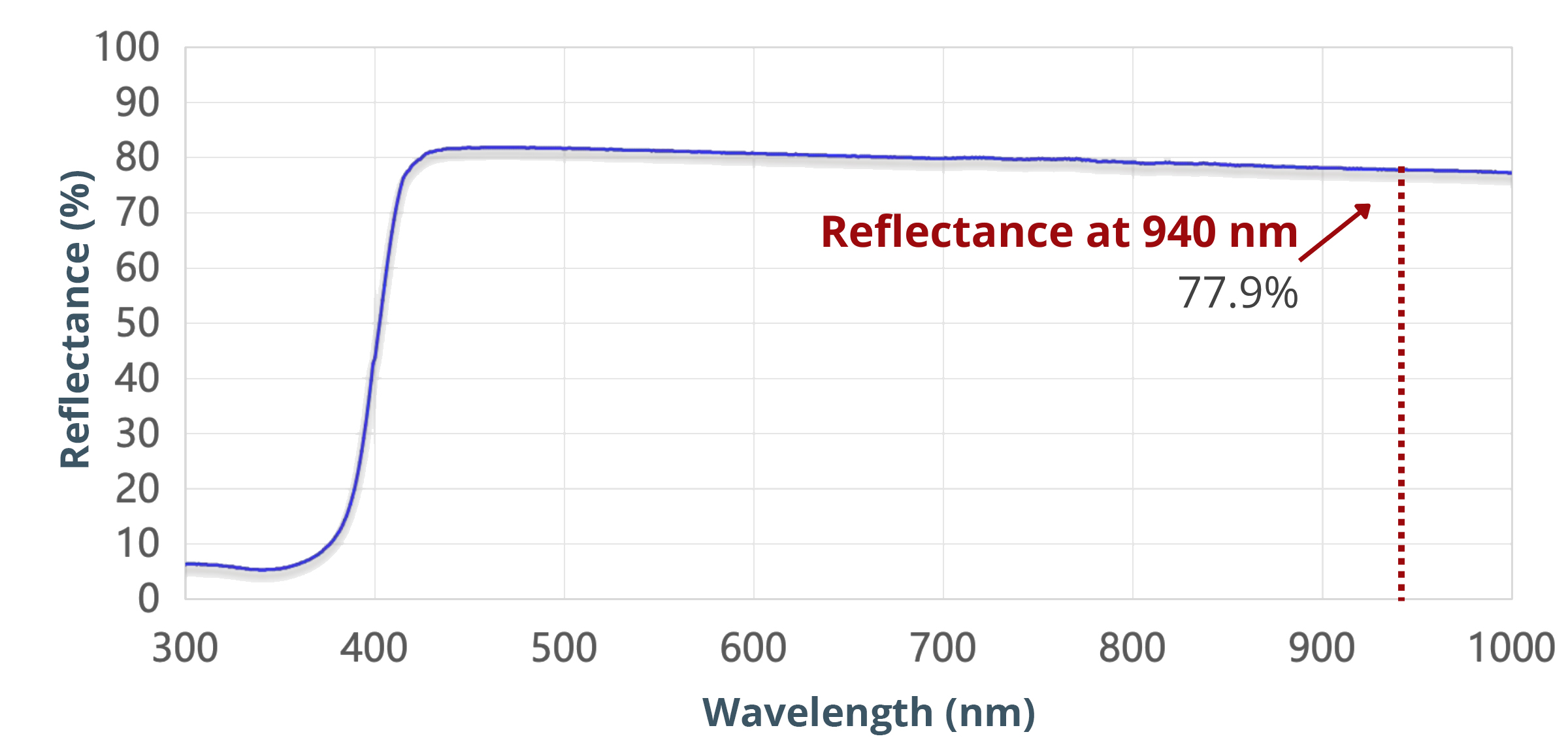
Viscosity Curve of Optolinq GT-W170MG at 175 °C
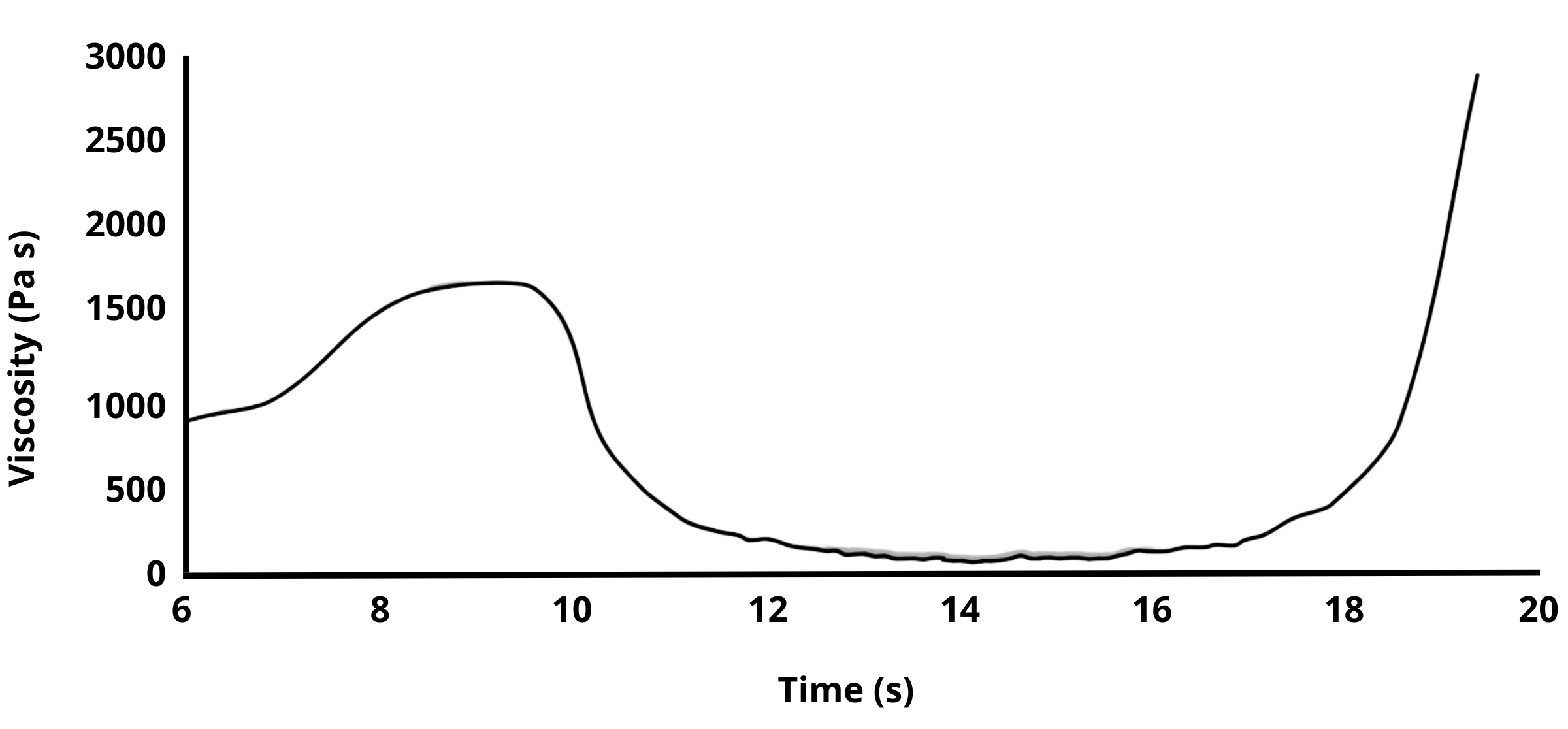
TMA Curve of Optolinq GT-W170MG
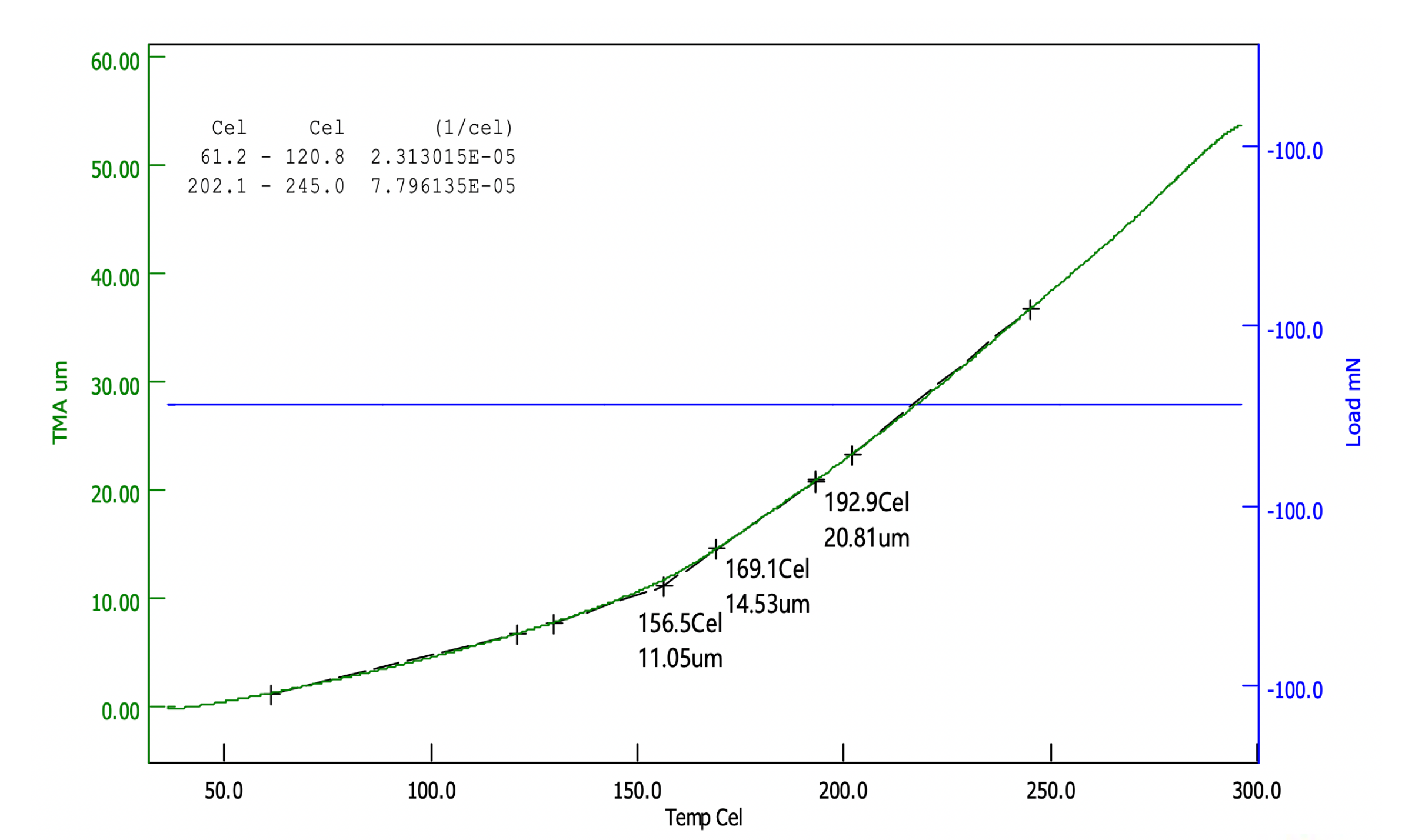
DSC Curve of Optolinq GT-W170MG
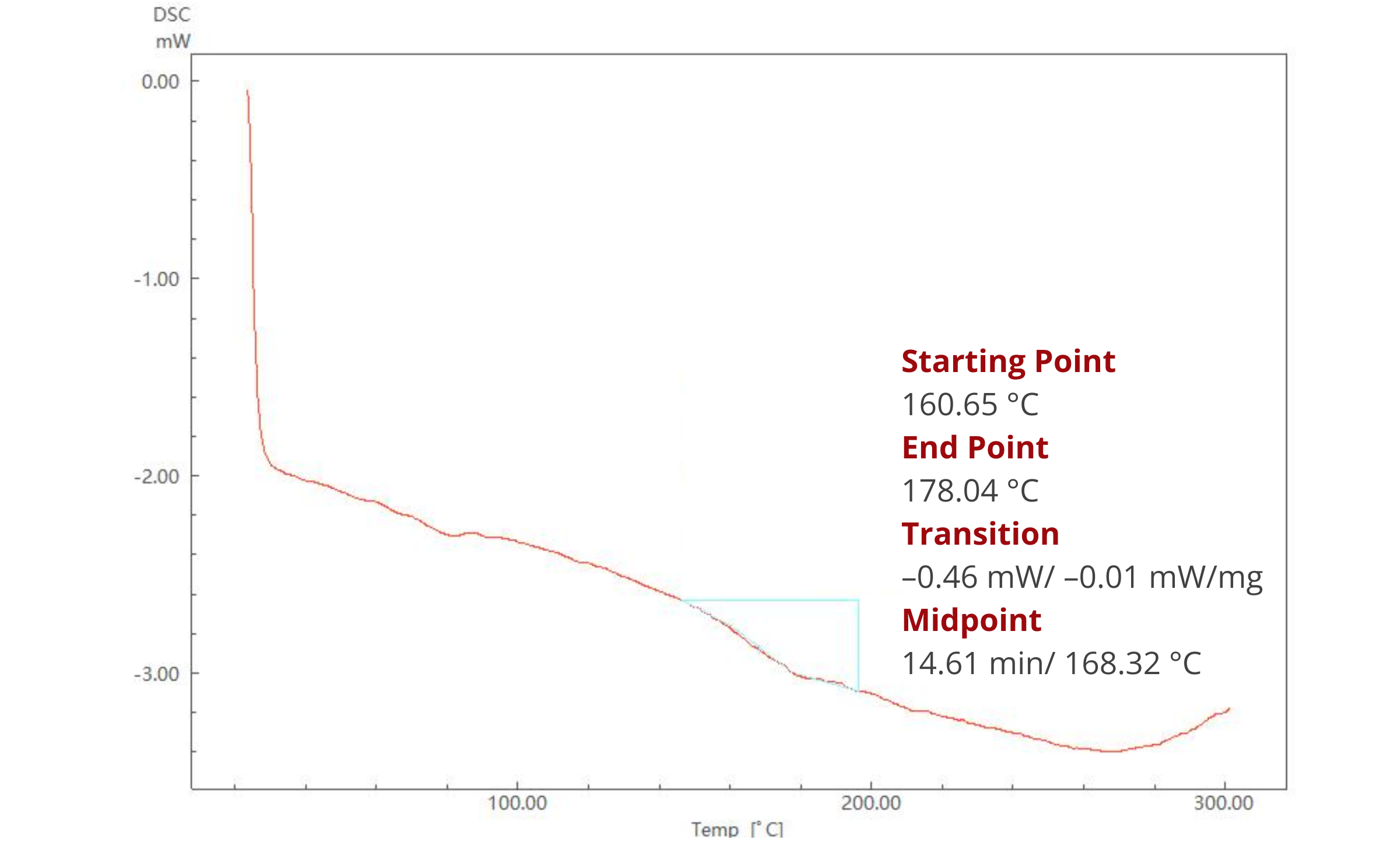
TGA Chart of Optolinq GT-W170MG
Adhesion Strenght of Optolinq GT-W170MG
Dielectric Strength and Breakdown Voltage of Optolinq GT-W170MG
Test Method: GB/T 1408.1-2016
| Sample No. | Thickness [mm] | Breakdown Voltage [kV] | Dielectric Strength [kV/mm] |
| 1 | 1.09 | 21.71 | 19.92 |
| 2 | 1.07 | 20.89 | 19.52 |
| 3 | 1.10 | 21.32 | 19.38 |
| 4 | 1.06 | 21.50 | 20.28 |
| 5 | 1.08 | 21.45 | 19.86 |
| Average | / | 21.45 | 19.86 |
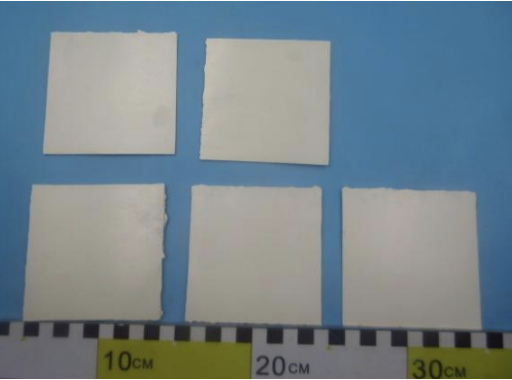
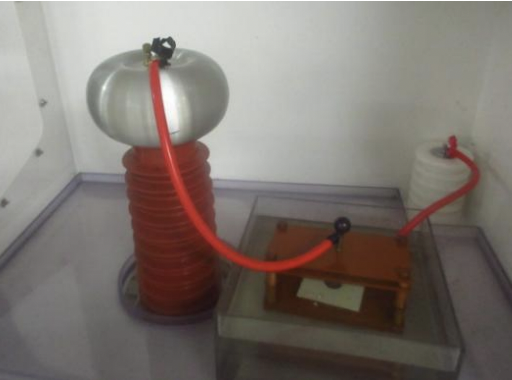
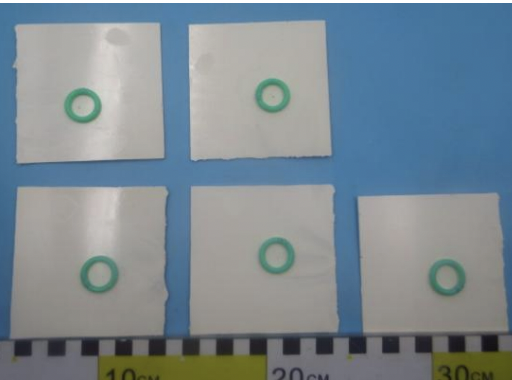
Processing Instructions
- Be sure to keep the product dry as moisture can lead to curing failures or affect the electrical integrity of compounds.
- Before use, thaw GT-W170MG for 16–24 hours at 20–25 °C with the package sealed. Keep the packaging unopened to prevent moisture contamination.
Storage and Handling
To ensure the integrity of OPTOLINQ GT-W170MG, keep it away from oxidizing materials. Avoid exposure to heat sources like molding dies and lead-frame preheating panels, as prolonged heat exposure can lead to the degradation of the molding compound. Transport the product at or below 10°C for best results. For extended storage, maintain a cold environment, ideally at 5 °C or lower. Under proper conditions, the shelf life of the product is 9 months from the manufacturing date. The pot life is 72 hours when unpacked at room temperature after removal from the cold room, including thawing time.
Please note that the provided information is based on available data and typical conditions. For specific applications and detailed test results, refer to the actual test data and conduct appropriate certifications.


